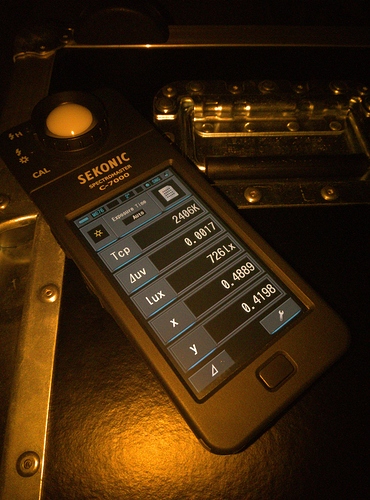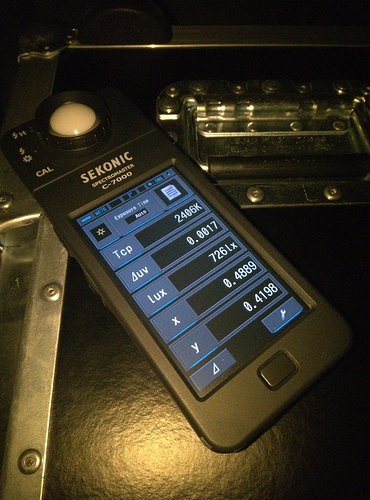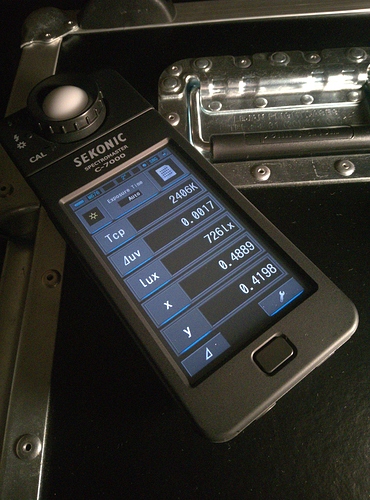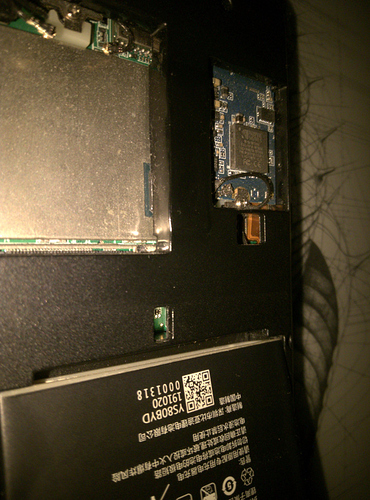Not quite sure what you’re showing there though - gain at 32 is extremely low, probably only useful in bright sunlight.
At first place I wanted to take screenshot of millipixels user interface (in version 0.20.0-1pureos1) anyway (to this thread related version) and realized that my permanently installed light bulb of 9W/2700K with 60 degrees focus reflects or bounces back too much light from flowers (to much contrast) and even lowest gain of 32 wasn’t helping much (as this light source was very near in distance) there.
After replacing first LED light bulb for the second 15W/3000K LED bulb in regular 270 degree angle picture taking photo (at same above my table lamp distance) looked quite differently (to the Librem 5 main camera). And yes, this clarification was needed as my initial indoor light source (first lamp) needed to be purposely replaced (not to move this table with those flowers somewhere else). Thanks for asking!
I’d rather measure the output before posting any numbers, I measured the output from two separate Librem 5s, both were in the region of 2400K, below is the summary results from one of the captures…
Agreed, the CRI results don’t make great reading, as a simple torch LED it isn’t really much of an issue, as a camera flash source however, it’s not going to be winning any prizes. In today’s world, I wouldn’t hang my hat on CRI, there is a number of problems with CRI in general and although not completely meaningless, it doesn’t provide a complete picture, it has been largely abandoned in favour of TLCI (the Librem 5 torch LED measures 37 for TLCI). For white light sources SSI against the relevant CIE Standard Illuminant is also becoming a common reference metric.
I find it strange to see so much talk of colour temperature with no mention of [white] balance. For a quick and dirty demonstration, below is an image of the meter used in the measurements, the image is taken with a Librem 5, zero ambient light, so it’s being lit purely by the torch LED at 100% intensity, the [white] balance is set at the default “d50”…
No great surprise that the image has a heavy amber tint, the effects of lighting the subject with 2400K while camera is set to colour balance on 5000K.
The next image has exactly the same parameters with the exception of the [white] balance being set to “A”…
The colour balance has certainly shifted in the right direction but it does have a clearly visible yellow tint, this is to be expected as [white] balance “A” is a reference to CIE A Standard Illuminant which is referenced to a tungsten source with a colour temperature of approximately 2850K (IIRC). Unfortunately, there is no option/ability to set the [white] balance of the camera to 2400K to match the torch LED.
The next image has the camera with the exact same parameters as the last image ([white] balance set to “A”), the only difference is that the torch LED has been turned of and the subject is being lit by a pocket light (DMG Lumiere DASH) set to approximately 2850K.
Doubtful, all of the major manufacturers have put out technical papers detailing the difficulties of both manufacturing LEDs to tight tolerances and accurately measuring the characteristics, in short, no manufacturer would commit to exacts.
That is some great information.
I have not mentioned white balance because my main concern is not having all 2400K light sources. Thanks for pointing out that if we are going to have a 2400K flash, we need a 2400K white balance setting.
Personally, I would like to push for a dual tone flash that can work from candle light to sunlight. Not that we would use a flash with sunlight, but some artificial sources mimic it. It seems like the hardware supports selecting one, the other, or both LEDs. We just need to patch the kernel driver and make Megapixels use it. However, it seems like the hardware does not support dimming the LEDs individually, although there might be a way to set the maximum current individually, but I have not seen that feature.
@Loki, thank you very much for your great post (as quite needed response)!
Nice, yet now that we know (very important post #84 related) that R9 is at around 0%, replacement of current COBs would be mandatory (those are of standardized size anyway) for the next devices (yes, please, as rather no investment than buying poor product, if and when making some photos related) even before any workaround in sight to be taken.
It’s not that uncommon. Flash can serve as an additional, not primary, source of light. I don’t know if anyone uses this technique with phones though. I normally don’t use flash in my favorite kind of photography, so I wouldn’t know.
EDIT: meaning that there are advantages to flash matching the temperature of common light sources.
I can see it useful for making shadows less obvious, but I am not sure if 2 COBs on a phone can make much difference outdoors. If it would be helpful, it would have to be indoor lighting that uses 5000K, which might be common in retail, but not in households. I am sure that there are a few situations where it can be helpful. I would guess that you would need a more powerful flash. At that point, most people are not using their phone camera. But I could see a market for a USB flash to use with a smartphone for times where you do not want to carry a dedicated camera around, but a compact, limited-use purpose-built flash would fit.
These were taken with just the torch light with the new white balance preset from the merge request above:
That was the birch model. Because most of Purism’s stuff is black (which is why I included the green and blue circuit boards), and black does not test white balance that well, I also took this picture:
I used the auto setting for most parameters. I probably could have dialed in a few things better. For the book, the colors are, for the most part, naturally that dull. You can see examples on the Internet to compare.
This reminds me - our photos are skewed towards warmer colors because our color calibration matrix is done really badly (by none other but myself).
Does anyone of you folks maybe have access to a color calibration chart and could take a photo of it (with a L5 of course) illuminated by a D65 source? 
(there are other reasons too, like using XYZ scaling instead of something like Bradford for chromatic adaptation, but first things first)
I can ask the colleague who works in the lighting lab.
But I haven’t seen them use a light source yet, so far they have always measured the color space and brightness of LEDs when I was there.
(and my phone must work properly again at the moment I have a problem with battery and charge).
I took some calibration photos but didn’t get around to successfully creating a matrix yet.
I can create a matrix, I just need a well-exposed and in-focus photo that’s illuminated by measurable D65.
Best I can offer is semi-controlled cloudless summer sunlight.
I try to get something there, the colleague did not know if they have the source, but he asks.
Thanks! One tip - when taking the picture, make it so the tester is in the middle of the photo and takes only around 50% of the area (this way we don’t get color distortion from lens shading affecting the fields on the tester)
bad news guys, we don’t have a calibrated light source in the light lab. Sorry I would have liked to support.
No worries. There’s a calibrated source I have access to (just don’t know when), and now that I’ve been reminded, I’ll put some effort into this again to close the topic.
FYI, as related (aldghough somewhat irrelevant here) to the NVSW219CT R9050 (where 50 relates to the R9 value), as built-into the NITECORE MT06MD flashlight:
Putting SmartArray L6 LED-Module 4W (12V) 6500K LED CRI=80 with 6NF2W757DR near Librem 5 main camera should be easily made. Yet I’d need to buy one + get ColorChecker and I do not mind to do this simple setup purchase (if necessary). @dos, just let me know what you think about such setup (would be useful for my needs anyway, and if recommended from your side, I’ll go ahead with this here related purchase).
EDIT: Using Fenix E01 V2.0 flashlight with the Cree XP-G2 S3 LED might be another simple approach for taking pictures, with Librem 5 camera, under D65.





